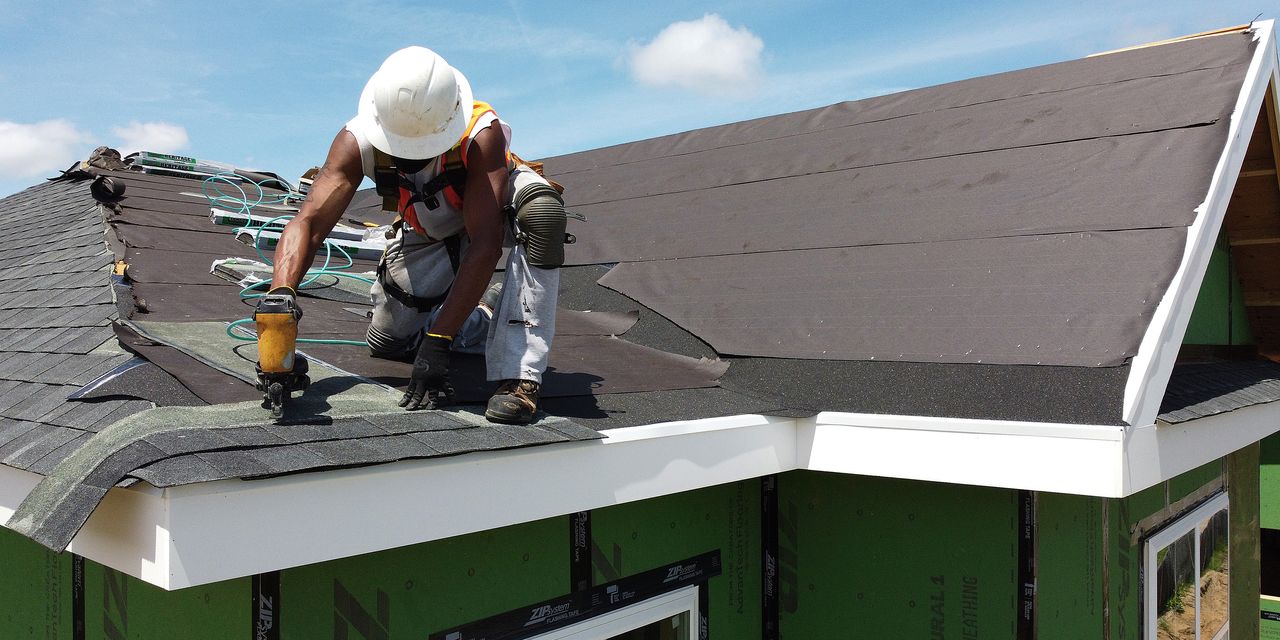Builder confidence faltered in August after rising for seven straight months. It’s a bad omen for new-home construction, a bright spot in a housing market hampered by rising mortgage rates, low supply, and strengthening prices.
A National Association of Home Builders index tracking builder confidence slumped six points in August to 50. Economists had expected confidence to hold steady, at an index reading of 56.
Higher mortgage rates were part of the explanation. The average 30-year fixed-rate mortgage has in recent weeks been climbing, with
Freddie Mac’s
weekly gauge coming in just below 7% last week. The closely watched survey could surpass 7% this week: The 10-year Treasury yield, with which mortgage rates often move, rose Monday and early Tuesday.
“Rising mortgage rates and high construction costs stemming from a dearth of construction workers, a lack of buildable lots and continuing shortages of distribution transformers put a chill on builder sentiment in August,” Alicia Huey, the home builder group’s chairman, said in a Thursday statement.
The index reading casts a shadow over July’s new-home construction data set for release on Wednesday. Economists expect construction on new homes was started at a seasonally-adjusted annual rate of 1.44 million in July, up slightly from the preliminary 1.43 million in June. The home builders index is meant to foreshadow the coming six months of single-family housing starts, which is the bulk of the total housing starts.
A separate measure of new authorizations, commonly called permits, is estimated to rise to a seasonally-adjusted annual rate of 1.45 million in July, according to FactSet, up from June’s level of 1.44 million. The metric is an indicator of future construction, measuring new building projects approved by localities.
Sales of newly constructed homes have been a bright spot in recent months in an otherwise tepid housing market. Contracts for new single-family homes in June were signed at a seasonally-adjusted annual rate of nearly 700,000, up more than 20% from a year prior, census data show. Contract signings for existing homes, meanwhile, were 15.6% lower than year-ago levels, according to the National Association of Realtors.
The confidence reading is a “reminder that housing affordability is an ongoing challenge,” said Huey of the home builders group. About two in five homes sold in the second quarter were considered affordable for families with the median income, the trade group said last week—the second-lowest reading since it began consistently tracking the data in 2012.
The decline to a reading of 50 puts the index at its break-even point, the level at which builders are equally split on market conditions. The index’s components show that builders were overall positive on conditions for present and future sales, but largely negative on traffic of prospective buyers.
Two exchange-traded funds tracking home builders and related industries,
SPDR S&P Homebuilders
(ticker: XHB), and
iShares U.S. Home Construction
(ITB), fell following the news. The funds are up roughly 40% and 45%, respectively, so far this year as public home builders have benefited from a lack of existing-homes for sale.
Despite headwinds posed by housing costs and construction constraints, “demand for new construction continues to be supported by a lack of resale inventory, as many homeowners elect to stay put because they are locked in at a low mortgage rate,” Huey said.
A Moody’s Investors Service note last week predicted that homebuying costs would remain high through 2024. “For new homes, incentives and other factors will lead prices and builder margins to fall through 2024,” the analysts wrote. “The lean inventory of existing homes for sale—homeowners who locked in low mortgage rates are hesitant to sell—will only somewhat mitigate strains on builders’ revenue and margins.”
Write to Shaina Mishkin at [email protected]
Read the full article here



